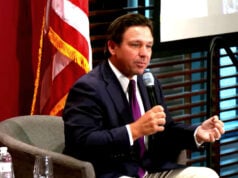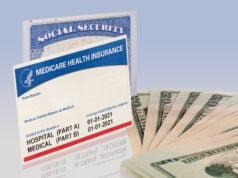
Medically reviewed by Dr. Payal Kohli, M.D., FACC — By James Roland
A sudden and significant reduction in blood flow to the heart muscle is known as a heart attack, while a similar disruption in circulation to the brain is called a stroke. While both events share some similar symptoms, certain signs of a stroke or heart attack are unique and worth knowing, especially if you or someone close to you has a higher risk of either medical emergency.
In addition to being able to recognize signs of a stroke or heart attack, it’s critical that you know how to respond. While both events can be life threatening, they can often be treated if the person in crisis receives medical attention promptly.
Table of Contents
Early warning signs of a stroke or heart attack
Not all heart attacks begin with sudden and severe chest pain. Early heart attack signs can develop slowly and may make you unsure of what’s going on. In addition, symptoms can vary from person to person.
Some common early heart attack symptoms include:
- mild chest pain that starts slowly and then comes and goes
- discomfort in the arms, back, neck, or jaw
- nausea or abdominal pain
- dizziness or lightheadedness
- shortness of breath with or without exertion
Early stroke symptoms can be even subtler. The most common warning sign of a stroke is a transient ischemic attack (TIA), also known as a “ministroke.” A TIA can occur hours, days or months before an actual stroke.
The main difference between a TIA and a full-blown stroke, aside from the severity of symptoms, is the difference is in the imaging findings (MRI) and duration of blockage. Typically a TIA blockage is short enough to avoid permanent brain damage.
Typical TIA “ministroke” symptoms include:
- sudden headache
- numbness or weakness, especially on one side of the body
- balance and walking problems
- sudden confusion
- swallowing difficulties
Symptoms of a stroke can often be easier to discern than those of a heart attack. One of the main distinctions is that a stroke tends to cause a sudden and serious neurological symptom, while the main symptom of a heart attack is chest pain.
The arms may also be involved, but while a heart attack may cause pain to run down one or both arms (often, but not always, the left arm), a stroke usually leaves one limb or the face feeling weak or numb.
A person having a heart attack may be able to raise both arms despite the pain. A person having a stroke may be able to raise one but not both arms.
Symptoms of a stroke or heart attack in women
Stroke symptoms in people who are assigned female at birth (women) and people who are assigned male at birth (men) are often similar, though a 2018 study suggests that women may also have some of the following atypical signs of a stroke:
- fainting
- fatigue
- incontinence
- pain
- overall body weakness
Women are also more likely to experience atypical heart attack symptoms, too. In addition to chest pain and shortness of breath — the most common heart attack symptoms for all groups — women often have one or more of the following symptoms:
- lightheadedness or fainting
- pain in the lower chest or upper abdomen
- upper back pain
- flu-like body aches
- extreme fatigue
Signs of a stroke or heart attack in men
In men, the primary reported heart attack symptom is chest pain that’s sometimes described as a squeezing sensation or pressure as though something heavy is resting on the chest. Other common heart attack symptoms for men include:
- upper body pain in the shoulders, neck, or jaw
- shortness of breath
- lightheadedness
- nausea
- cold sweat
Common early signs of a stroke include:
- sudden, severe headache
- weakness or numbness on one side of the body or face
- vision problems
- difficulty speaking or understanding others’ speech
Both a stroke and heart attack can be fatal, but a full recovery is also possible in many cases. The outcomes depend upon the severity of the events and how quickly medical support is provided.
With prompt, effective treatment, successful completion of cardiac rehabilitation, and a healthy lifestyle, a heart attack survivor may live many years with few reminders of the attack.
The prognosis after a stroke can be more difficult to predict. Depending on which part of the brain was damaged by the stroke, there can be lifelong complications even after rapid treatment and rehabilitation. Some long-term complications include:
- walking difficulties
- swallowing problems
- reduced function of one or both hands
- incontinence
- cognitive impairment
A 2019 study also notes that post-stroke seizures occur in 5 to 9 percent of stroke survivors and mood changes, including depressive symptoms, may occur in up to 70 percent of stroke survivors.
A 2016 study published in the Journal of Physical Therapy Science suggests that nearly 89 percent of first-time stroke survivors may experience one or more of the following complications soon after the event:
- urinary tract infection
- shoulder pain
- insomnia
- depression
- musculoskeletal pain other than shoulder pain
- walking difficulties
- swallowing problems
A heart attack is the result of heart disease, which accounts for about 1 in every 4 deaths in the United States annually, according to the Centers for Disease Control and Prevention. It has long been the nation’s number one cause of death.
The American Heart Association reports that stroke accounts for 1 in every 19 deaths in the United States, making it the nation’s fifth leading cause of death.
What to do if you suspect either a heart attack or stroke
A suspected stroke or heart attack should always be treated as a medical emergency. Calling emergency services like 911 immediately may not only save your life but also limit the damage of either a heart attack or stroke.
And as much as possible, try to remain calm. Get help from family members, neighbors, or friends who may be able to assist you while you wait for paramedics or after you get to the hospital.
Takeaway
When signs of a stroke or heart attack present themselves, you may be inclined to deny that such a serious vascular crisis is occurring. But knowing what the telltale signs of each event are and how to respond will give you the best chance at a positive outcome.
This information is especially important if you or a family member face an elevated risk of a heart attack or stroke because of high blood pressure, diabetes, high cholesterol, or other major risk factors.
Disclaimer
The information contained in South Florida Reporter is for general information purposes only.
The South Florida Reporter assumes no responsibility for errors or omissions in the contents of the Service.
In no event shall the South Florida Reporter be liable for any special, direct, indirect, consequential, or incidental damages or any damages whatsoever, whether in an action of contract, negligence or other tort, arising out of or in connection with the use of the Service or the contents of the Service. The Company reserves the right to make additions, deletions, or modifications to the contents of the Service at any time without prior notice.
The Company does not warrant that the Service is free of viruses or other harmful components












